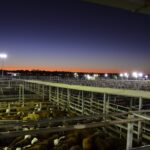As Australia continues to grow its multi-cultural workforce, our workplaces are becoming more culturally and linguistically diverse. The challenges for managing onsite safety in these workplaces grows exponentially when language and cultural barriers impact on the ability to effectively communicate with the workforce.
This subset of the workforce – broadly classified as culturally and linguistically diverse (CALD) workers – has been recognised as being at a higher risk or more vulnerable, not only due to the challenges in communicating but also from the fact that there is a disproportionately high percentage of these workers in higher risk industries such as manufacturing, construction and warehousing.
In addition, there are a range of government schemes, incentives and programs that promote the use of ‘imported’ workers in large groups on short-term arrangements, to support specific higher risk industries (such as red meat processing).
While considered to be good business (or a necessary requirement) within many organisations, this poses a considerable number of concerns from a WHS perspective, most notably how to effectively communicate with a ‘culturally and linguistically diverse’ workforce. These risks include communication-related issues such as basic miscommunication, instructions and signage not being able to be understood correctly, and a failure to report hazards or unsafe practices.
Most larger employers with these types of workforces have recognised the risk, by tying together a series of actions to provide information in different languages, using visual language instead of words, using informal in-house translators, and relying on demonstration-based training. But there is also a need to be wary, and culturally-attuned to your specific workforce. For example, within a typical ‘Australian’ workplace culture, the workers may acknowledge what the Supervisor is saying in the toolbox talk by nodding their heads, however there are a number of nationalities / cultural groups who use the ‘head nod’, but culturally it is not used to represent comprehension.
The other main concern is the worker’s understanding and application of the employer’s requirements, and this is greatly influenced by culture, including culture toward work. Cultural differences can influence how workers perceive and prioritise workplace safety. For example, workers from different cultural backgrounds are likely to have varying attitudes towards authority, safety risks, and working as part of a team.
While not wishing to over-generalise, vulnerable CALD or migrant workers often display a low likelihood of questioning onsite safety practices, with the risk of unsafe work practices proceeding unchallenged for fear of losing their job.
The management of safety within this subset of workforce is challenging, and while there are minimal resources currently available through WHSQ, a quick Google search indicates that other jurisdictions have resources that may be useful, including:
- Worksafe NSW has a dedicated webpage, stepping through the risk factors (for both CALD and migrant workers) and providing some resources,
- WorksafeVic has a dedicated webpage and resources supporting their Compliance code: Communicating occupational health and safety across languages,
- WorksafeACT has a dedicated webpage for Supporting culturally and linguistically diverse (CALD) workers, and
- Safework Aus are working on Guidance for employers on communicating with migrant and multicultural workers.
Please contact QRMC for more information or assistance.











